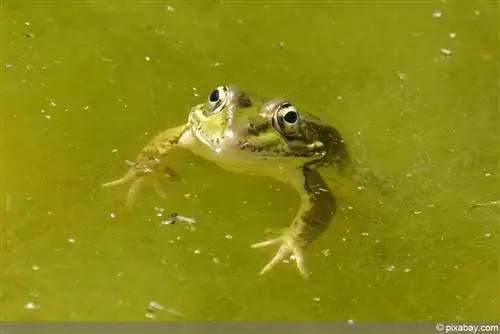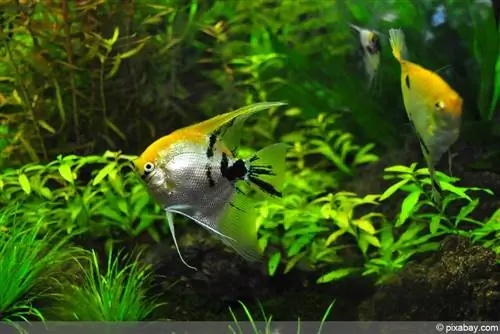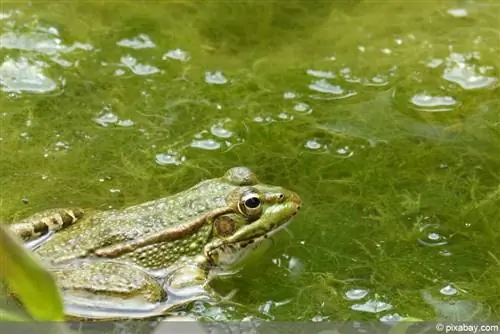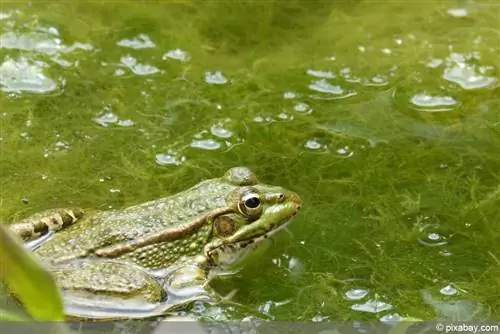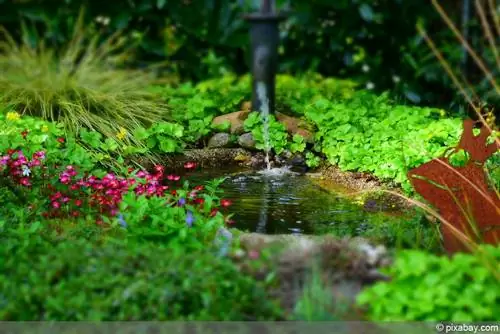- Author admin [email protected].
- Public 2023-12-17 03:39.
- Last modified 2025-01-24 12:45.
Thread algae grow in many ponds. There are various reasons for this, e.g.
- Rain,
- Pollen being blown in,
- Excrements of pond creatures,
- dying plant parts,
- dead animals.
All of this leads to an excess of nutrients in the garden pond. This in turn promotes algae growth. If the sun is added and warms the water, the algae often spread explosively. The pond water looks green and the thread algae mats the entire pond flora - an absolute nuisance.
Fishing algae
A simple method is to fish the algae out of the water. An unpainted, rough stick or branch is sufficient.
- You pull it through the water in rotating and circular movements.
- The algae wrap around the stick, rod or branch.
- You can pull them out and take them off.
- Of course you can also use a pond net.
Algae control with UV devices
The UV devices are well suited for larger ponds. They kill algae with short-wave, high-energy UV light. The devices affect all microorganisms in the pond. But after a few weeks the biological balance in the pond is restored.
Water exchange
A water change can help with an algae problem. However, at least 30 percent of the total amount of water must be exchanged. This usually only makes sense for small ponds.
Chemical means of control
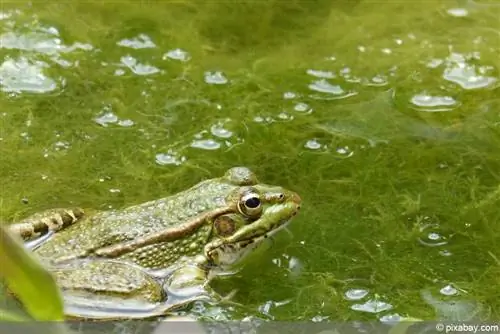
There are numerous remedies such as algae stop. They also help against algae, but seriously disrupt the biological balance. The pond usually needs a very long time until everything is balanced and he althy again.
Prevention through sufficient water circulation
- Thread algae form in stagnant water.
- Keeping the oxygen supply constant through water circulation helps prevent algae.
- The integration of a stream, a waterfall, a fountain sculpture, a fountain and the like are helpful.
Not too many fish in the pond
- A high fish population in relation to the size of the pond worsens the water quality.
- Fish excrement contaminates the water and creates more nutrients than the pond plants can convert.
- Always make sure that there are only a few fish in the pond.
Basics on preventing algae formation
- Remove dead plant parts and leaves from the pond in spring! Rotting plant parts provide a lot of food for algae.
- Don't put too much fish food in the pond! Fish food rich in fiber in particular promotes the development of filamentous algae.
- Adequate planting of the pond with plants that help to break down the nutrients.
- Evergreen aquatic plants ensure that the water is purified all year round.
Conclusion of the editors
Countless pond owners fight against thread algae every year. Often the pond is simply too small or too shallow to be able to create a biological balance. That's why it's important to make plans and build correctly before creating the pond. If you want to use fish and overwinter in them, you have to take a few things into account when setting them up anyway. Several pond zones are also ideal. The right system and planting and a suitable filter system can prevent an algae plague.
If algae still appear, they can be fished out. Pond shading can also help. The easiest and cheapest option is a sun shade. Otherwise, you just have to know that a pond in the garden involves a lot of work. However, one is richly compensated by its beauty.

